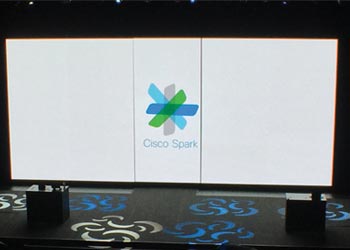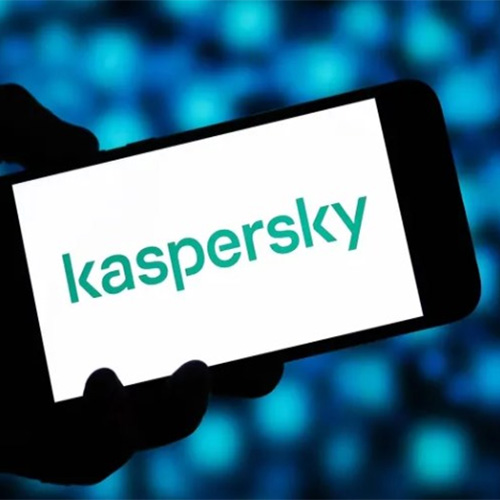The next battle ground for Collaboration
2017-05-24
Collaboration technologies will boost real time business performance and collaborating in the workplace will enable businesses to finish important projects and meet crucial deadlines efficiently
Collaboration is said to take place when two individuals or a group of people work together towards achieving a common goal by sharing their ideas and skills. It can happen in traditional as well as in virtual teams, by connecting your endpoints to the cloud.
With advancements in technology and digital platform and by using cloud-based programs, one can share files and communicate. With multiple individuals working on a project, the work can be divided up equally and efficiently between those with the time and the expertise to handle specific tasks. This also significantly reduces the project delivery time. In fact this has become quite commonplace.
Enterprise and SME companies are increasingly realizing the value of collaboration and looking for ways to foster it within their teams, both traditional and virtual. Cloud collaboration technologies allow users to upload, comment and collaborate on documents and even amend the document itself, evolving the document. Businesses in the last few years have increasingly been switching to use of cloud collaboration.
Leading Vendors in the collaboration industry are - CISCO, Microsoft, Avaya, Mitel and Huawei.
Increasing demand for the Digital Workplace...
Collaboration challenges people to think, articulate and receive clarity about their competencies. It serves as a mirror that gives them a glimpse of their strengths and weaknesses. Because two heads are better than one, teams work better together and plug each other’s gaps.
The business world is changing while the importance of collaboration platform rises. Businesses should understand that in order to achieve the business objectives, they should create new ways for employees to do their work. In today’s digital age, effective collaboration is increasingly achieved via the digital workplace. As per Gartner, 79% of surveyed organizations plan to increase their mobile spending by 36%, not surprising considering the mobility results in increased employee output, less inventory and fewer operational expenses.
The Unified Communication (UC&C) & Collaboration market continues to evolve rapidly, with new technologies and products aiming to simplify usage and enrich user experience. Gartner predicts that the UC market will grow slightly from $41 billion in 2014 to $42.4 billion by 2019.
Cisco – A big giant in the collaboration space...
While UC leaders Cisco and Microsoft still maintain their strong leads in the market, Gartner particularly named Cisco a leader in its Magic Quadrant for Unified Communications for the ninth consecutive year. This year, Gartner placed Cisco highest on “ability to execute” and furthest in “completeness of vision” for its unified communications offerings. According to the report, leaders have a full UC offering, strong market presence, and can demonstrate success in the field.
Cisco has had a busy last year. It continued to evolve its portfolio to better meet customer needs. It -
• Expanded Cisco Spark from a business messaging app to a full cloud service with meeting, message, and calling
• Delivered new and better experiences by integrating on-premises unified communications with Cisco Spark cloud services
• Brought video meetings to the next level – not just through its broad range of endpoints and applications. Its acquisition of Acano improved
interoperability and scale. Cisco continues to bring web conferencing to the next level.
Cisco in March announced the launch of Spark at Enterprise Connect 2015 in Orlando, USA, which coincided with Cisco Live 2015 in Melbourne. A few months earlier Microsoft had announced its integration of Skype and Lync. With this there is increasingly an important role that collaboration applications and services are playing in support of the UC&C market. The real challenge is on how to keep all communications secured.
Cisco is positioning Spark both as a collaboration platform and a client. With WebEx getting old from a technology standpoint, Spark provides an opportunity for Cisco to merge its collaborations platforms (HCS, WebEx, and Telepresence) across a single federated environment that offers enterprise security and function in a consumer-like user experience.
Cisco’s main goal was to simplify meeting-room technology and so it introduced the Spark Board, an all-in-one collaboration device that can be a screen-sharing presentation tool, a digital whiteboard and a video conferencing display. It is designed to make it easier to set up and use connected conference rooms, taking the place of a hodgepodge of components that are managed and operated separately. The Board can eliminate projectors, speakerphones, video screens and whiteboards that usually work separately.
Collaboration is becoming increasingly important in the modern world as we become more connected around the globe. Cloud computing and faster internet connections have given rise to tools enabling employees to collaborate with colleagues effectively. With the rise of remote workers and by using collaboration tools, more employees are choosing to work from home. According to the survey by VARINDIA, many employees believe that they are more productive when working from home than their office-based counterparts.
See What’s Next in Tech With the Fast Forward Newsletter
Tweets From @varindiamag
Nothing to see here - yet
When they Tweet, their Tweets will show up here.





























